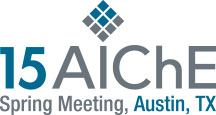

Designing a safe and cost-effective pressure relief system is a constant concern for Engineers working to design safe facilities. Existing flare systems are an integral part of a plant’s overall safety system and have been built and modified, sometimes over the course of many years and through several plant expansions. These systems are very expensive and time-consuming to replace or retrofit and require long lead times to design and build, often leading to plant shutdowns for installation or maintenance. This paper presents an approach to performing a study on an existing flare system in order to suggest modifications to assure that the risk of uncontrolled releases and harm to personnel and the environment is minimized.
The evaluation and proper design of flare and relief systems has been discussed in industry standards for many years. With the advent of formalized Process Safety Management in the 1990’s and several hi-publicity incidents, the emphasis on safe relief systems has increased.
In-company safety audits and OSHA’s National Emphasis Program for flare systems has put pressure on many companies to re-evaluate their existing flare systems. This requires a formal flare study which involves many variables that the Engineer must evaluate. These variables include the properties of the fluids that are being processed, operating parameters, relieving pressures, piping and vessel characteristics, loss of containment scenarios, safety systems and operating practices. Each of these different variables can have a tremendous impact on the effectiveness of a flare and relief system for a facility.
A major concern in addressing an existing flare system is the cost and time associated with modifying or replacing it. This cost must be weighed against the costs in terms of potential loss of life, environmental damages, physical plant damages, loss of production and negative publicity. There are many options to modify deficient flare and relief systems short of replacement. Some of the most common deficiencies and most effective “fixes” involve the following:
-
-
-
Maintaining complete and up to date records for relief valve sizing calculations and piping specifications.
-
Developing and modeling over-pressure cases to understand worst case, multiple relief scenarios.
-
Re-sizing inlet and outlet piping “one size up” to handle flow and back pressure buildup in worst case scenarios.
-
Taking extreme pressure and temperatures into account when specifying piping for relief system vessels.
-
-
This paper presents a practical approach for evaluating an existing flare and relief system. We will present the most common elements that are found to be “working” and “not working well“. We will discuss the common bottlenecks in a relief system. This will help the evaluation team to focus their efforts on the items that are most likely to need attention. The result is a set of recommendations that determines the minimum modifications necessary to reduce the risk of uncontrolled releases to an acceptable level.
